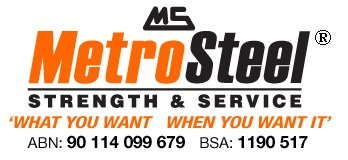When buying certain materials (particularly for construction) corrosion resistance is usually a key factor. In most cases recreating standard conditions are problematic because of the lengthy time factors involved. For this reason, accelerated corrosion tests are usually performed to speed up the process that may otherwise be caused over long periods of time by salty air, weather, or extremes of temperature.
One such test is the salt spray test, however there are question marks over whether this really is an acceptable method of testing or not. Here’s why…
Accelerated testing doesn’t always give a true reflection
Initially, the salt spray test was designed to access the quality of particular coatings – for example, the porosity and their ability to withstand corrosion. For many grades of stainless steel however, results will often lead to failure. This is purely because the salt spray test covers the metal in an aggressive salt solution way harsher that you would find in any typical seaside, salt water location.
So what does this mean?
Where you’d typically expect a high-quality grade marine-steel coating to pass any accelerated salt spray test, the fact remains that even in the harshest of climates, many grades of steel are still likely to withstand decades of service before they show even the faintest signs of corroding.
So while the obvious advantages of this type of testing are:
- Speedier test time delivering faster results, using
- tests are easy to recreate and standardise, with
- Limited costs
The truth is that this type of test should be (if you’ll excuse the pun) ‘taken with a grain of salt.’
Coasting performance is highly dependent upon the surface condition
Another factor which may skew results somewhat is the surface conditions of the alloy. In particular surface roughness.
Why?
Simply because an uneven surface such as tiny pits or welts can influence the amount of time that the solution remains on the designated area. Here’s an example… Think of a sloped perfectly smooth road. When it rains, the water barely touches the surface at the top collecting at the bottom. Whereas a heavily pitted flat road is likely to collect all that water in the uneven surface areas. For this reason, testing 3 dimensional parts using an accelerated salt spray test is likely to skew results because the majority of the spray solution is likely to get trapped in the horizontal areas. This can lead to wrong conclusions when pre-judging the behaviour of the coating as a whole.
So are there more suitable tests?
In a word yes!
Ideal tests are those which vary the parameters of the test on both qualitive and quantitative accounts. These include critical pitting temperature tests and electrochemical critical pitting measurement tests.
They key takeaway
While it’s clear that any steel coatings passing the accelerated salt spray test are likely to be extremely resistant to corrosion, this test should only be used as a rough guide at best. Do bear in mind that there are likely to be other (and probably cheaper) anti corrosion coatings available that will last just as long in real time conditions.
If you’d like to find out more about what steel grades/types are best for what projects, then why not contact the stainless steel experts at Metro Steel. We’ve been helping businesses and individuals with their construction/metal fabrication for many years and fully understand the best materials for each job. To find out more contact us on 07 3204 1000 today.
 Talk to an Expert (07) 3204 1000
Talk to an Expert (07) 3204 1000 Working Hours - Mon – Fri 7:00 AM – 4:00 PM
Working Hours - Mon – Fri 7:00 AM – 4:00 PM